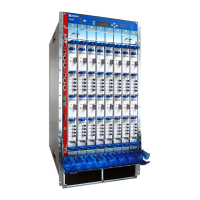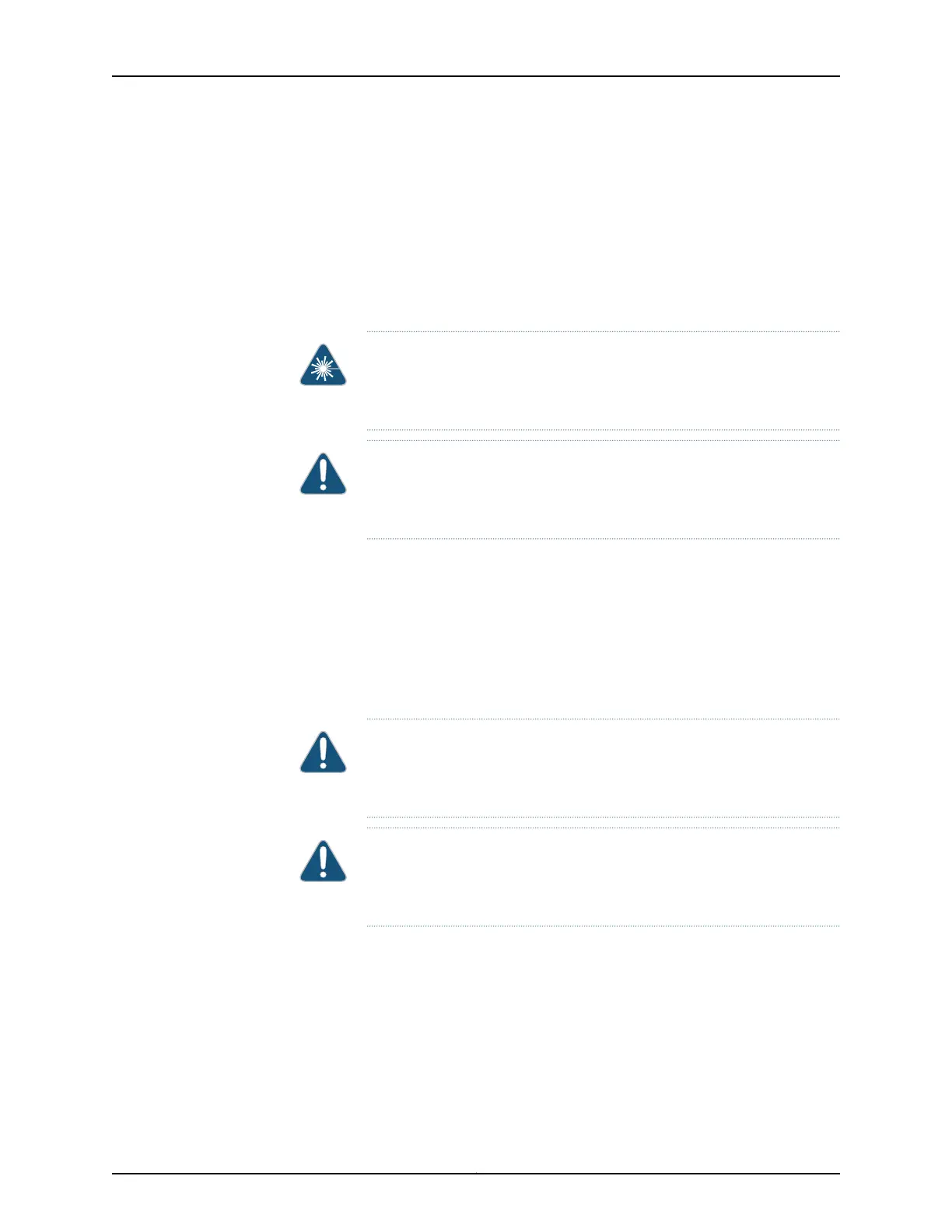Installing a T640 PIC Cable
To install a PIC cable (see Figure 169 on page 348):
1. Have ready a length of the type of cable used by the PIC. For cable specifications, see
the T640 Core Router Interface Module Reference.
2. If the PIC cable connector port is covered by a rubber safety plug, remove the plug.
WARNING: Do not look directly into the ends of fiber-optic cables or into
the transceivers on the PIC faceplate. Fiber-optic transceivers and cable
connected to transceivers emit laser light that can damage your eyes.
CAUTION: Do not leave a fiber-optic transceiver uncovered except when
inserting or removing cable. The safety cap keeps the port clean and
prevents accidental exposure to laser light.
3. Insert the cable connector into the cable connector port on the PIC faceplate.
4. Arrange the cable in the cable management system, to prevent it from dislodging or
developing stress points. Secure the cable so that it is not supporting its own weight
as it hangs to the floor. Place excess cable out of the way in a neatly coiled loop in
the cable management system. Placing fasteners on the loop helps to maintain its
shape.
CAUTION: Avoid bending fiber-optic cable beyond its minimum bend
radius.An arc smaller than a few inches in diameter can damagethe cable
and cause problems that are difficult to diagnose.
CAUTION: Do not let fiber-optic cable hang free from the connector. Do
not allow fastened loops of cable to dangle, which stresses the cable at
the fastening point.
5. Insert the other end of the cable into the destination port.
6. Repeat the previous steps for any additional cables.
7. If the PIC is offline (its failure indicator LED is lit), use one of the following methods
to bring the PIC online:
347Copyright © 2017, Juniper Networks, Inc.
Chapter 28: Replacing Line Card Components

